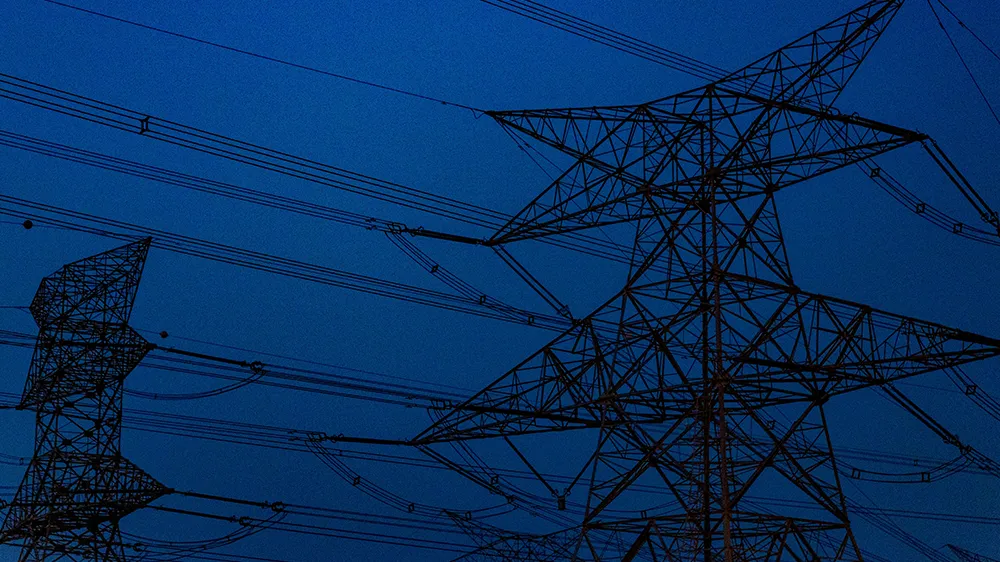
Visit us at Transmission and Distribution Nov. 11-12 | Booth 308
Discover how inadequate control room monitoring and poor situational awareness have caused history's worst power grid blackouts, and why these factors remain critical to preventing future catastrophic failures.
April 8, 2025


Power grids, the backbone of modern society, have for decades been subject to widespread and often disruptive outages. While technological advances have greatly improved reliability, several catastrophic failures throughout history remind us that vulnerabilities still exist. This narrative explores some of the most significant blackouts in the history of power grids, weaving through the technical mishaps, human errors, and natural phenomena that contributed to these events.
In the early years of electrification, power grids were isolated networks designed for specific local areas. With limited interconnectivity, blackouts were often localized, and lessons from these early failures influenced the development of more resilient systems. However, as grids expanded and interconnected, small disturbances in one part of the network began having far-reaching consequences. This expansion brought about new challenges: aging infrastructure struggling to meet growing demands, the increasing complexity of grid operations, and unforeseen interactions between multiple systems in a tightly coupled network.
The 1965 Northeast Blackout (USA & Canada)
In November 1965, a series of errors and equipment failures cascaded into one of the first major cross-border blackouts in northeastern North America. A tree branch brushing against a high-voltage line in Ontario triggered the initial fault. Inadequate system monitoring allowed the fault to propagate unchecked, leading to widespread outages that affected millions of customers on both sides of the border.
• Vegetation management failure (a tree branch contact).
• Insufficient real-time monitoring and system automation.
• Lack of cross-border coordination protocols between utility companies at that time.
Summer of 1977 is etched into the collective memory of New Yorkers. However, the blackout on July 13-14, 1977, was not solely the result of a power grid failure but intertwined with social unrest. A blackout that affected all five boroughs emerged when a series of technical malfunctions converged with inadequate grid management and maintenance. Although the blackout itself was somewhat accidental—a mismanaged switching operation during peak summer demand—the situation was exacerbated by the city's precarious infrastructure and ongoing fiscal difficulties.
• Operational error during switching procedures.
• Underinvestment in grid maintenance exacerbated by austerity measures.
• High summer demand on a deteriorating infrastructure.
The 2003 blackout was one of the largest in North American history, affecting approximately 50 million people in parts of the United States and Canada. A minor software bug in an alarm system at a control room near Detroit prevented operators from detecting abnormal changes in the grid. When a series of line failures occurred, the problem quickly escalated into a massive cascading failure. The absence of timely situational awareness among system operators turned a regional fault into a prolonged blackout that lasted for up to four days for some customers.
• A software bug disabling key alarm functions and delaying operator intervention.
• Unchecked cascade of line failures due to inadequate real-time communication systems.
• Insufficient redundancy and automated control that could isolate issues in time.
In July 2012, India experienced what is widely recognized as the largest blackout in history, leaving over 600 million people without power. The Indian power grid, spanning vast geographic regions, was strained by unprecedented demand, mismanagement, and equipment failure. A series of overdrawn lines and lack of proper load distribution led to grid collapse in multiple sections. This catastrophic failure not only disrupted daily life but also impacted economic activities across the nation.
• Overdrawn transmission lines due to rapid demand escalation.
• Poor grid management practices combined with aging infrastructure.
• Inadequate load shedding protocols that failed to prevent an overload scenario.
Across these case studies, several common factors emerge as contributors to major grid failures:
A recurring issue in several incidents, including operational mistakes during switching and inadequate procedures for fault detection.
Failures in software and real-time monitoring systems hinder early warning mechanisms, often allowing minor issues to escalate rapidly into major blackouts.
Whether due to aging systems or rapid load increases, the physical grid is often pushed to its limits, with insufficient upgrades or maintenance exacerbating vulnerabilities.
Many events highlight the importance of coordinated responses, be it cross-border utility cooperation or intra-regional communication during emergencies.
High demand periods expose the grid's weaknesses; proper load shedding practices and demand forecasts are essential to prevent failures.
The lessons drawn from these events have spurred widespread changes in how modern grids are managed. Investments have been made in smart grid technologies, enhanced renewable integration, and robust automation systems. However, as power systems become more complex, the challenges of cybersecurity and climate change add new dimensions to grid management efforts.
The history of power grid blackouts is as much a history of technological evolution as it is a story of human oversight and resilience. Despite significant technological strides, vulnerabilities in power systems remain inherent due to an interplay of age-old human errors, insufficient maintenance, and the unyielding demand for electricity. Each blackout has served as a harsh lesson, pushing utilities, engineers, and policymakers toward a future resilient to failures. By understanding these past events, modern grid operators continue to innovate and invest in systems that emphasize automation, cybersecurity, and improved coordination, ensuring that the lights stay on even amid unforeseen challenges.
• U.S. Department of Energy. (2004). “Report on the August 14, 2003 Blackout.” U.S. Department of Energy. Retrieved from https://www.energy.gov
• National Research Council. (2005). “Understanding the Causes of the 2003 Blackout and Preventing Future Outages.” National Academies Press.
• Energy Information Administration. (2012). “Power Grid Reliability and the 2012 India Blackout.” EIA. Retrieved from https://www.eia.gov
• Historical accounts from major newspapers such as The New York Times and The Globe and Mail provided contemporary reports on the 1965 and 1977 blackouts.
• IEEE Power & Energy Society. (Various years). “Case Studies in Power System Failures.” IEEE Xplore Digital Library.